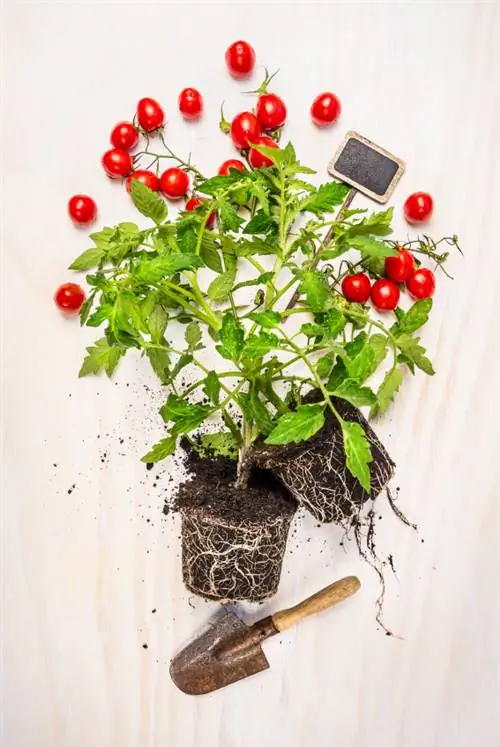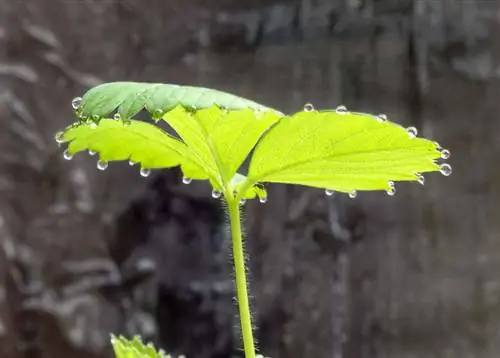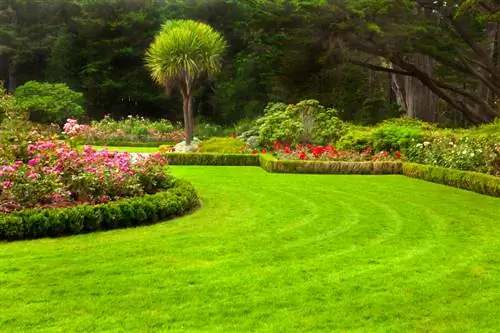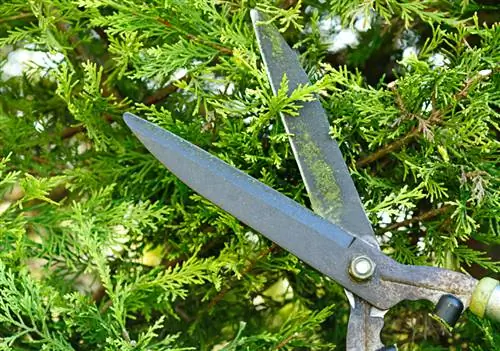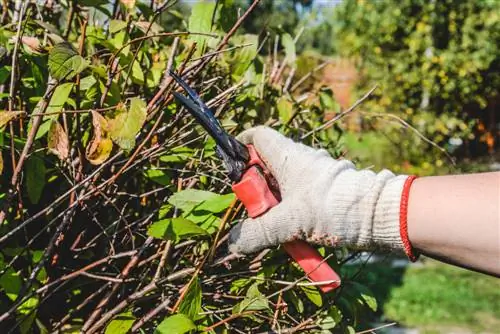- Author admin [email protected].
- Public 2023-12-16 16:46.
- Last modified 2025-06-01 06:02.
After successful cultivation, repotting young tomato plants into the bucket is now on the agenda. The following lines explain which factors play a role in a precise, concise and easy-to-understand manner.

What do you need to successfully repot tomatoes?
To successfully repot tomatoes, you need a bucket with at least 20-40 liters volume, vegetable soil with compost and horn shavings, drainage material, a climbing aid and sufficient water. Plant the plant deep, up to the cotyledons, and ensure good drainage.
The right materials - the best substrate
After successful sowing and subsequent pricking out, strong tomato plants up to 40 centimeters tall have developed. Before the younglings move to the balcony in mid-May, they are repotted into their final pot for the summer. The following materials should be available:
- a bucket with at least 20, preferably 40 liters volume and a bottom opening
- good vegetable soil as a substrate, enriched with compost and horn shavings
- coarse, inorganic material for drainage, such as gravel, grit or crushed pottery shards
- a stable climbing aid, such as a bamboo stick (€27.00 on Amazon), a fiberglass stick or a trellis
If you prefer to mix the soil for tomatoes yourself, combine loamy garden soil with compost, horn shavings and a little sand for permeability.
Step-by-step instructions
Before you actually start repotting, place the tomato plant in a container with room temperature water. Here the root ball can soak up water until no more air bubbles appear. How to proceed:
- spread the coarse material for drainage over the floor opening
- fill the pot a third full with substrate
- Unpot the tomato plant and shorten the longest root strand a little with your fingernails
- place in the middle of the pot and anchor the trellis
- fill in the rest of the substrate and press down
- leave a pouring edge of a few centimeters free and pour on
Always plant tomatoes as deep as possible. The soil should reach up to the cotyledons. Any processing point must nevertheless be located just above the surface of the earth. It is advantageous to plant the young plant at a slight angle. As an adventitious rooter, a tomato also develops roots from the stem, which is beneficial for stability.
Tips & Tricks
The drainage immediately loses its function against waterlogging if it becomes clogged with fine, crumbly substrate. Knowledgeable hobby gardeners spread an air and water permeable weed fleece over it before filling in the vegetable soil.

